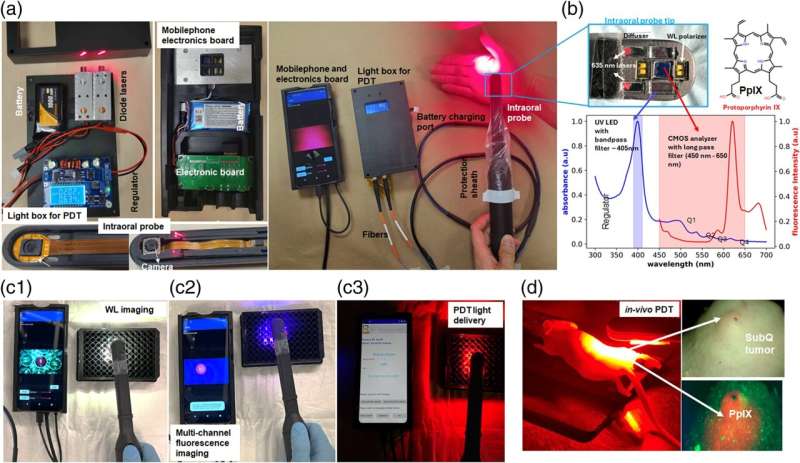To address this problem, researchers have developed a compact, affordable device that can both image suspicious lesions and deliver light-based therapy to treat them. Their report is published in Biophotonics Discovery.
The device uses a smartphone-coupled intraoral probe with specialized LEDs and filters to capture white-light and fluorescence images to pinpoint oral cancers. It also includes laser diodes to activate a light-sensitive compound called protoporphyrin IX (PpIX), which accumulates in cancerous tissue after the application of a precursor drug, 5-aminolevulinic acid (ALA).
When exposed to light, PpIX produces reactive molecules that destroy cancer cells while sparing healthy tissue. This approach, known as photodynamic therapy, has shown promise in treating early oral cancers with minimal side effects.

